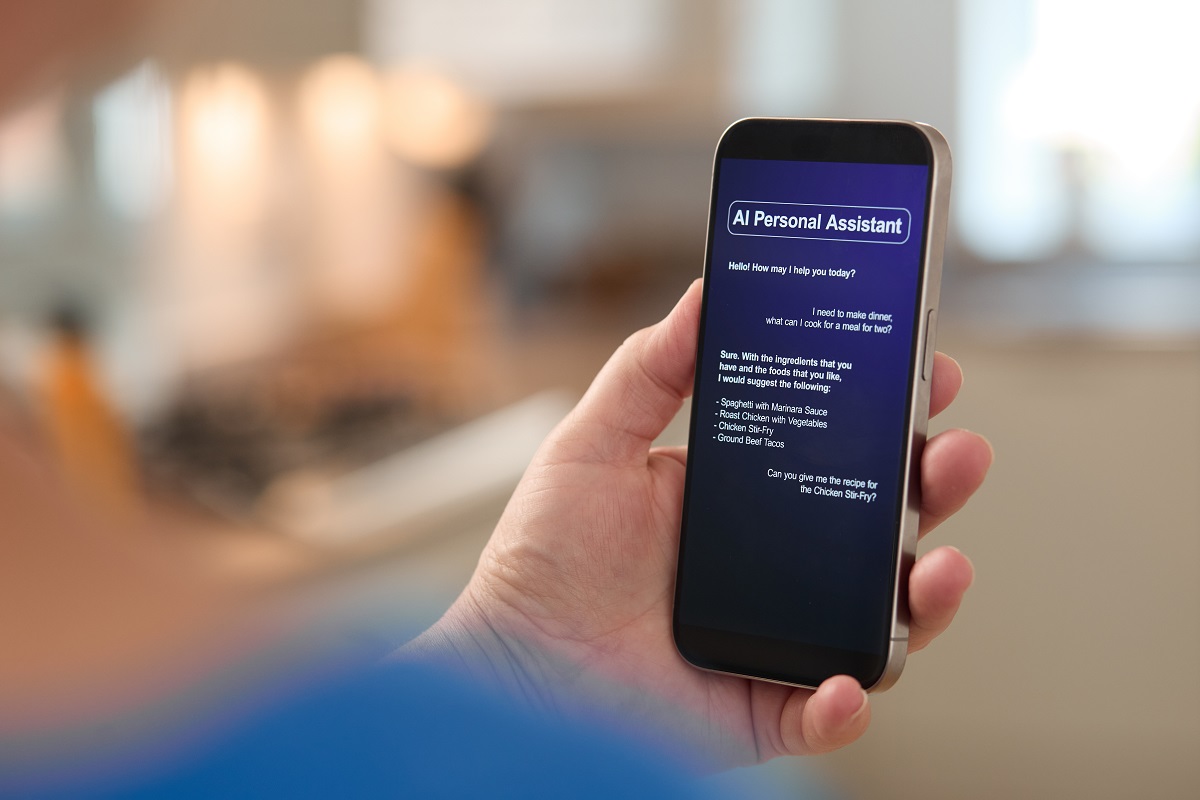
The Future of Business Automation: Are You Ready?
The Automation Revolution Has Arrived
Running a business today is like juggling flaming swords while riding a unicycle—on a tightrope. It’s thrilling, sure, but let’s be honest: it’s also exhausting.
Between chasing leads, managing customers, handling admin, and keeping up with marketing (not to mention actually delivering your product or service), most small business owners are stretched way too thin. That’s where business automation comes in—not as a fancy buzzword, but as a real, practical way to take the chaos down a notch (or ten).
So, what exactly is business automation?
In basic terms: it’s using technology to handle repetitive tasks so you and your team can focus on the big stuff—like growth, innovation, and maybe even taking a lunch break for once.
From automating emails and scheduling social posts to streamlining customer onboarding and invoicing, automation can save time, reduce errors, and bring back that feeling of control that every business owner craves.

In this guide, we’ll break down:
Why automation matters now more than ever.
How it can transform different parts of your business.
Signs you’re ready to automate (even if you think you’re not).
Simple steps to get started—without overwhelm or tech headaches.
Ready? Let’s dive in and future-proof your business—one smart automation at a time.
Why Business Automation Matters in 2025 (and Beyond)
If the last few years have shown us anything, it’s this: change isn’t coming—it’s already here. The businesses that are thriving in 2025 aren’t necessarily the biggest players—they’re the ones who’ve figured out how to work smarter, not harder. And the smart move? Automation.
The Rise of Automation: A Business Essential
Recent data shows that nearly 90% of small businesses have either adopted automation or are planning to do so in the next 12 months. Why? Because automation has gone from “nice to have” to “can’t live without.”
Small businesses using automation are seeing:
Up to 30% time savings on admin tasks
Higher customer retention through better follow-ups
Fewer mistakes and less overwhelm for overworked teams
What’s Driving the 2025 Automation Boom?
AI-Powered Everything: From AI-driven customer service to predictive analytics, small businesses now have access to technology that was once reserved for the enterprise elite.
Low-Code/No-Code Simplicity: Automating business processes no longer requires a developer on staff. Tools today are built for everyday users—no tech headaches.
Remote & Global Workforces: Automation helps businesses stay organized, efficient, and connected—no matter where teams or clients are located.
And here’s the bottom line: The future of business is automated. It’s no longer a question of if you’ll automate—it’s about how soon you’ll do it and what that transformation will unlock for your growth.
How Business Automation Transforms Different Areas of Business
Business automation isn’t just about saving a few clicks or scheduling a few emails—it’s about reshaping how your entire business runs so you can scale faster, serve better, and stress less.
Let’s break down where automation can make the biggest impact—and where you’re probably still doing things the hard way.
A. Marketing & Lead Generation: Turning Cold Leads into Warm Conversations
Email Marketing Automation: From welcome sequences to follow-ups, automation ensures no lead falls through the cracks.
CRM Workflows: Automated lead scoring, tagging, and nurturing keep your pipeline flowing without manual effort.
Social Media Scheduling: Pre-schedule posts, curate content, and stay visible—even while you sleep.
Example: A boutique fitness studio automated its lead response emails and saw a 40% increase in class bookings—all while the owner finally took weekends off.
B. Sales & Customer Service: Close More Deals and Delight More Customers
Automated Proposals & Invoicing: Send proposals and invoices instantly—no more chasing paperwork.
Chatbots & Self-Service Portals: Answer FAQs, book appointments, and provide 24/7 support without extra staff.
Pipeline Automation: Automate repetitive sales tasks so your team can focus on closing deals.
Example: A home services company used automation to follow up on quotes within minutes—boosting conversions by 25%.
C. Operations & Admin: Simplify the “Unseen” Work That Eats Up Your Time
Project & Task Management Automation: Automatically assign tasks, send reminders, and track progress.
Employee Onboarding & HR: Automate new hire paperwork, welcome emails, and first-week training.
Billing & Subscription Management: Set up recurring billing, payment reminders, and even thank-you emails.
Example: A marketing agency automated client onboarding, saving over 10 hours per project—and cut errors to nearly zero.
Automation doesn’t replace people—it empowers them. By automating the repetitive, you free your team (and yourself) to focus on strategy, creativity, and customer relationships.

Signs Your Business is Ready for Automation
We get it—“automation” might sound like something only tech giants or Silicon Valley startups need. But the truth is, small and mid-sized businesses are the ones who benefit the most when they stop doing everything manually.
So how do you know it’s time to automate? Here’s your quick gut-check:
1. You’re Drowning in Repetitive Tasks
If you or your team are stuck doing the same things over and over—sending emails, updating spreadsheets, following up manually—it’s a clear sign automation could save you hours every week.
2. Leads Are Slipping Through the Cracks
Do you ever forget to follow up with a prospect? Miss an important customer request? Automation ensures no opportunity gets lost because of human error or overloaded inboxes.
3. You’re Using Too Many Disconnected Tools
Juggling multiple apps that don’t talk to each other? That’s a recipe for wasted time, duplicate work, and frustration. Automation within a unified system like Kyrios can connect disconnected processes together so everything works seamlessly.
4. You’re Spending More Time Working In the Business Than On It
If you feel like a hamster on a wheel—busy but not moving forward—automation is how you shift from operator to CEO. It gives you breathing room to focus on growth, not just survival.
5. You Want to Grow, But Can’t Afford to Hire More Staff
Automation is like adding a team of digital assistants without the overhead. It helps you scale without needing to dramatically increase headcount.
If you said “yes” to even two or three of these signs, it’s time to explore automation seriously. The sooner you start, the sooner you’ll stop feeling overwhelmed and start seeing momentum.

Overcoming Common Fears & Misconceptions
The idea of “automation” can feel intimidating. We hear it all the time—business owners who know they should automate but are held back by a few common misconceptions. Let’s bust those myths wide open:
Myth #1: “Automation is Only for Big Companies”
Nope. Not anymore.
In 2025, automation tools are built for businesses of every size—including solopreneurs and small teams. With the right system, you don’t need a massive budget or an IT department to get started.
Myth #2: “It’s Too Expensive”
Wrong again.
Many automation tools (especially all-in-one platforms like Kyrios Systems) actually save you money by reducing wasted time, lost leads, and the need for extra staff. Plus, with predictable monthly costs, it’s far more affordable than you think.
Myth #3: “It’s Too Complicated—I’m Not Tech-Savvy”
Good news: Modern automation doesn’t require coding or tech wizardry. Tools today are built to be user-friendly, simple, and fully supported. And if you decide to work with Kyrios Systems, we’re right there to help every step of the way.
Myth #4: “I’ll Lose the Personal Touch”
This is a big one—but the reality is, automation enhances the personal touch by making sure you respond faster, follow up consistently, and deliver the right message at the right time.
It doesn’t replace human connection—it protects and amplifies it.
Getting Started with Business Automation
By now, you’re probably thinking:
“Okay, I get it—automation matters. But where the heck do I start?”
Don’t worry—we’ve got you. Getting started with business automation doesn’t have to be overwhelming, expensive, or complicated. Here’s a simple step-by-step roadmap to help you take action right away.
Step 1: Identify Your Time Wasters
Start by asking:
What tasks do you (or your team) repeat over and over?
Where are things falling through the cracks—missed follow-ups, forgotten invoices, delayed responses?
Make a quick list. These are your automation opportunities.
Step 2: Start Small—Automate One Process
Pick one process to automate first—something simple but impactful, like:
Automating lead capture and follow-up emails
Scheduling social media posts
Auto-sending invoices or appointment reminders
Quick wins build confidence.
Step 3: Choose the Right Tools (Hint: All-in-One is Best)
Instead of cobbling together five different apps, look for a centralized platform with automation capabilities (like Kyrios Systems) that can handle:
CRM & email automation
Marketing funnels
Task management
Sales pipelines
All in one place = fewer headaches, better results.
Step 4: Track, Tweak, and Grow
Once your automation is live, don’t “set it and forget it.”
Keep an eye on what’s working (or not).
Refine your messages, timing, and processes over time.
As you get comfortable, add new automations step by step.
Automation is a scalable system—not a one-and-done project. Most Kyrios Systems users start with just one or two automations and then scale up over time—saving dozens of hours each month without ever feeling overwhelmed.

The Future of Automation—What’s Next?
If automation has already reshaped how we work in the past few years, what’s next might just blow your mind.
The next generation of automation isn’t just faster or more efficient—it’s smarter, more human, and more powerful than ever.
Here’s what small business owners like you can expect as we move through 2025 and beyond:
1. AI That Learns and Predicts (Not Just Reacts)
Most automation today works like this: If X happens, then do Y.
That’s great, but the next level is AI that can actually learn from patterns and make decisions on its own—without you having to set every rule manually.
What does this mean?
Your system could notice that leads who receive emails in the afternoon are more likely to book a call—so it automatically sends future emails at the perfect time.
It could flag customers who might cancel based on their recent behavior—and trigger retention efforts.
Example:
A landscaping company uses AI-driven automation to predict when customers are most likely to book seasonal services. The system automatically sends reminder texts before customers even think to call—resulting in more bookings and fewer missed opportunities.
Plain English:
The software doesn’t just do what you tell it—it learns what works and improves itself over time.

2. Hyper-Personalization at Scale
In the past, automation meant sending the same email or message to everyone. But in 2025, systems can automatically customize communications for each individual customer based on their behavior, preferences, and needs.
What does this mean?
Emails that change content based on what the customer clicked on last time.
Chatbots that remember a customer’s name, preferences, or past purchases.
Product recommendations tailored to each user.
Example:
An online boutique uses automation to send personalized product recommendations based on what each shopper browsed. Customers feel like the store “gets them,” and sales go up by 35%.
Plain English:
Instead of blasting the same message to everyone, your automation will talk to each customer like an old friend who knows what they love.
3. Voice, Video, and Conversational Automation
We’re moving beyond text and clicks. Today’s customers want natural, engaging interactions—and automation is stepping up.
What does this mean?
Voice assistants that help customers book services or get answers hands-free.
Automated video messages for onboarding or sales follow-up.
AI chatbots that sound conversational, friendly, and human—not robotic.
Example:
A real estate agent uses short automated video messages to welcome new leads and explain next steps. The personal touch increases engagement and helps the agent close 20% more deals.
Plain English:
Automation isn’t just about emails and forms—it’s about creating authentic-feeling conversations through voice, video, and smart chat that builds real trust.

4. The Rise of Automation-First Businesses
In the past, automation was an “add-on” to an already chaotic business. But the most successful businesses in the near future will be built around automation from the start.
What does this mean?
Systems and processes are designed from day one to run with minimal manual effort.
Every touchpoint—marketing, sales, onboarding, service—is automated, yet still personal.
Example:
A subscription box company designed its entire customer journey—from order to delivery to renewals—to run automatically. With just a small team, they serve thousands of customers and have doubled revenue without burnout.
Plain English:
Instead of fixing problems after they happen, automation-first businesses prevent problems—and scale with ease from the ground up.
What Does This Mean for You?
The future of automation isn’t something for “later”—it’s happening right now.
The sooner you start:
Automating key processes
Using tools that learn and adapt
Personalizing at scale
…the sooner your business will be ready to grow without the stress, chaos, and limits that hold so many back.
Embrace the Future, Stress Less, & Grow More

Let’s be honest—running a business isn’t easy.
You wear a dozen hats. You juggle clients, deadlines, team members, and that never-ending to-do list. But here’s the truth most business owners don’t hear enough:
You don’t have to do it all manually.
You don’t have to burn out to succeed.
You don’t have to wait to start using the same tools that help bigger businesses thrive.
Automation is the Key to:
Freeing up time to work on your business, not just in it.
Providing faster, more consistent service to your customers.
Scaling without chaos, stress, or hiring a massive team.
And the best part? You don’t have to figure it out alone.
Platforms like Kyrios Systems are built specifically to help small businesses like yours simplify operations, automate the boring stuff, and grow with confidence.
It’s Time to Take Back Control—Your Future Starts Now
Right now, you have a choice:
You can keep running on the hamster wheel—working harder, burning out, and feeling like you’re always one step behind…
Or you can finally step into the future and let automation carry the weight—so you can focus on what really matters: growing your business, serving your customers, and getting your life back.
You deserve a business that works for you, not one that runs you ragged.
You deserve time to think, to breathe, to lead.
👉 Take your first step right now:
[Book Your Consultation] we’ll show you exactly where you can save time, cut stress, and grow.
You’ve built something amazing.
Now let’s help you scale it without the overwhelm.


